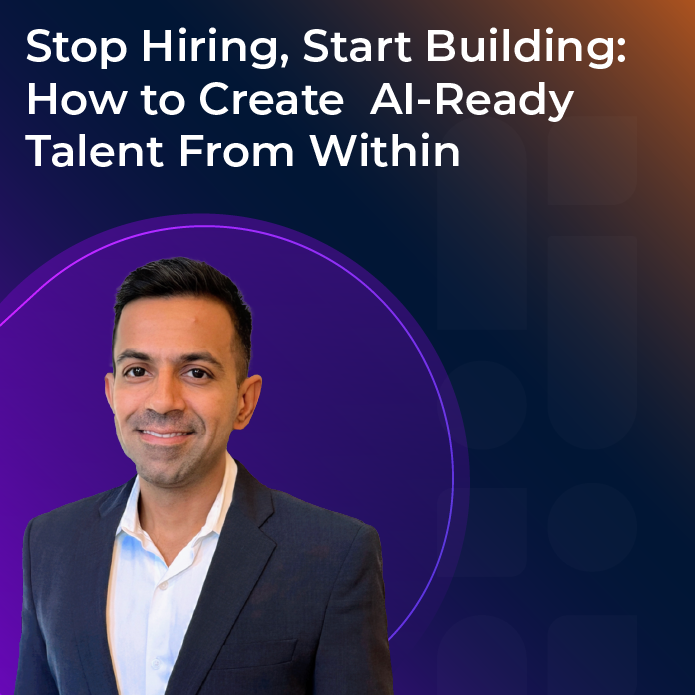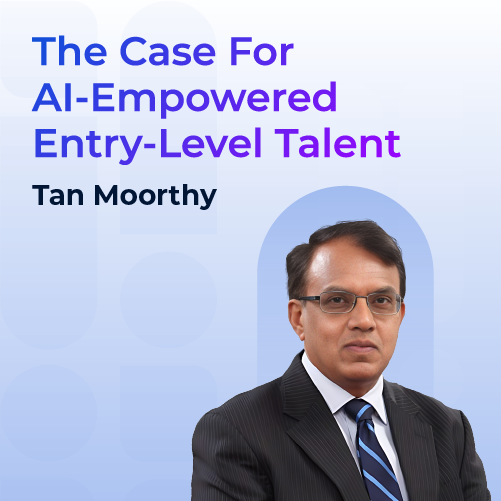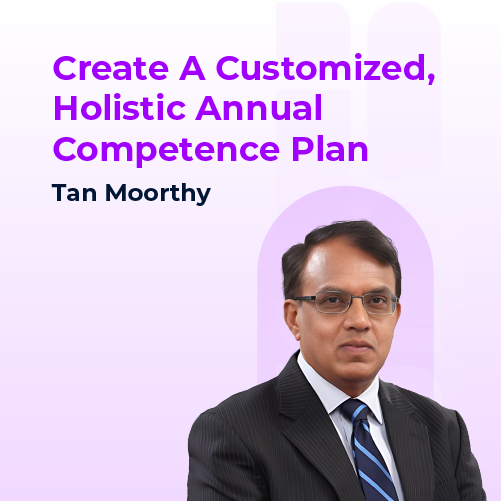Insights

Blog

Last month, we published part 1 of a conversation we had with HR/talent veteran Tadhg Bourke, who is currently the SVP of Global Talent at Cisco. The conversation focused on the “total talent viewpoint,” which connects various functions that help to hire and develop talent.
Read on to see how the rest of our conversation unfolded. You’ll learn more from Tadhg about how organizations can maximize their recruiting efforts, his views on the top hard and soft skills organizations should look for, how organizations can better support internal mobility, the role emerging technologies play in the talent process, and what the future holds for the total talent viewpoint.
How can organizations ensure that their recruiting efforts are aligned with their talent development initiatives to drive long-term employee engagement and retention?
Three practical points come to mind here. First, start by working together on a day-to-day basis. While teams may sit on the same leadership team, they can often become siloed and focused on their own role. Building natural accountability and collaboration between talent acquisition and development is essential for alignment.
Second, it’s important to share and utilize current skills data. Once a company has developed a robust talent intelligence system, both talent acquisition and development teams should have access to it. A skilled talent acquisition leader won't focus solely on external hires but will look internally to mobilize existing talent, especially when an internal mobility program is in place.
Finally, shared OKRs should be implemented. Instead of measuring talent acquisition and development teams separately, they should be aligned under a collective set of goals tied to business outcomes, not just traditional departmental metrics. This holistic approach ensures both teams are working toward the same strategic objectives.
When it comes to recruiting, what are the top hard skills and soft skills organizations should prioritize heading into 2025?
The hardest skills to fill are often the newest and most in-demand ones, particularly in areas like data analytics and artificial intelligence (AI). A decade ago, data analytics was not as widely discussed, but as data became increasingly important, professionals with these skills have been in high demand. Similarly, AI, especially generative AI (GenAI), has created a surge in demand for individuals who can deploy AI to improve organizational efficiency and create better experiences. These emerging technical skills are challenging to find, partly because educational institutions have not been preparing workers for them for long.
On the soft skills side, the rise of AI will shift the focus more heavily toward human-centric abilities, as AI increasingly augments rather than replaces many roles. Soft skills like relationship management, empathy, and discernment will become more important than ever, especially since many decisions require nuanced understanding and judgment that only humans can currently provide. As a result, professionals with strong soft skills like these will be in higher demand and will be paid a premium.
How can organizations better support internal mobility initiatives, like upskilling and reskilling programs, to unlock the full potential of their existing talent pool, and what benefits does this bring to both employees and the company?
This answer may be surprising, but a major barrier to effective internal mobility programs is manager "hoarding"—managers who are reluctant to let go of valuable team members, fearing that their team's performance will suffer without them. This behavior can prevent employees from moving into new roles that would offer development opportunities, as managers may withhold promotions or set conditions that delay transfers. Overcoming this requires a cultural shift, particularly targeting middle managers who are often the gatekeepers of internal mobility. Executive leadership needs to set the tone by emphasizing the value of internal mobility, both for the business and for employees’ development and retention.
To address manager resistance, companies can implement clear "rules of engagement" for internal mobility, ensuring that managers can't unduly block transfers. For example, when a candidate is selected for a new role, there should be a defined timeframe (e.g., 4-6 weeks) for the move to happen, preventing delays that could jeopardize the receiving team's needs. These small cultural changes can help make the internal mobility process much smoother, aligning individual manager interests with the broader organizational goals. It's crucial to recognize that while much of the focus in internal mobility is on demand (finding open roles), the supply side—managing manager behavior—is equally important.
What role does AI play to reshape talent acquisition and how should organizations balance this innovation with more human-centered hiring practices?
I believe AI will disrupt the talent function quite significantly in a positive way. AI is already revolutionizing the process by enhancing the understanding and matching of candidate skills to job requirements. It plays a big role in the development of the talent intelligence engine using inference technology to better interpret and harmonize resumes, making it easier for recruiters to identify relevant skills. AI also helps streamline the hiring process by weeding out non-relevant candidates more effectively than traditional keyword searches.
Additionally, AI improves the productivity of recruiters by narrowing down large applicant pools to a manageable number, enabling them to focus on the best candidates. The technology also aids in tasks like scheduling interviews, reducing the manual labor and inefficiency involved in coordinating multiple candidates and interviewers. And finally, AI can suggest the most appropriate interviewer based on skills and experience, ensuring a better match, and providing interviewers with the right context. Overall, AI enhances both the efficiency and quality of the recruitment process, benefiting everyone involved.
As talent needs evolve, what’s next for the "total talent" viewpoint? How should organizations think about integrating emerging trends—like AI and remote work—into their total talent strategies to stay competitive in the future?
It’s critical to integrate AI into strategy development from the beginning, rather than adding it as an afterthought. Leaders should approach challenges from a first-principles perspective, focusing on understanding AI’s capabilities, limitations and data implications. By educating themselves about AI, they can ensure it is at the core of the solution development process.
Remote work is not a new concept, but something that has been part of global companies for many years. In fact, when I worked for Google 20 years ago, I was working from Dublin and interacting with colleagues across the globe and doing it quite effectively. Instead of executives focusing solely on getting people back to the office, they should leverage the lessons learned from remote work and find the right balance between in-person collaboration and remote work to build a positive culture. As talent professionals, we should feel encouraged to educate C-suite executives on the value of flexible work arrangements, as the focus on getting people back to the office may overlook the productivity and effectiveness of remote work, which as I mentioned, has been successful for global teams for years.
Any final thoughts?
From my perspective, there are three items organizations need to double down on:
- Workforce Planning: Effective workforce planning is crucial to avoid redundancy and inefficiency. Without it, different teams may work in silos, leading to wasted efforts.
- Data-Driven Decisions: Leveraging data, especially skills intelligence platforms, is essential to enable informed decision-making. A central platform for skills data will make the work more coherent, productive and effective.
- Collaboration Across Functions: It’s important to work together across departments to address the broader business challenges rather than focusing solely on departmental goals. Solving business problems together ensures alignment, and, ultimately, better business outcomes.


Stop Hiring, Start Building: How to Create AI-Ready Talent From Within
Explore the full story
Stop Hiring, Start Building: How to Create AI-Ready Talent From Within
Explore the full story







.webp)